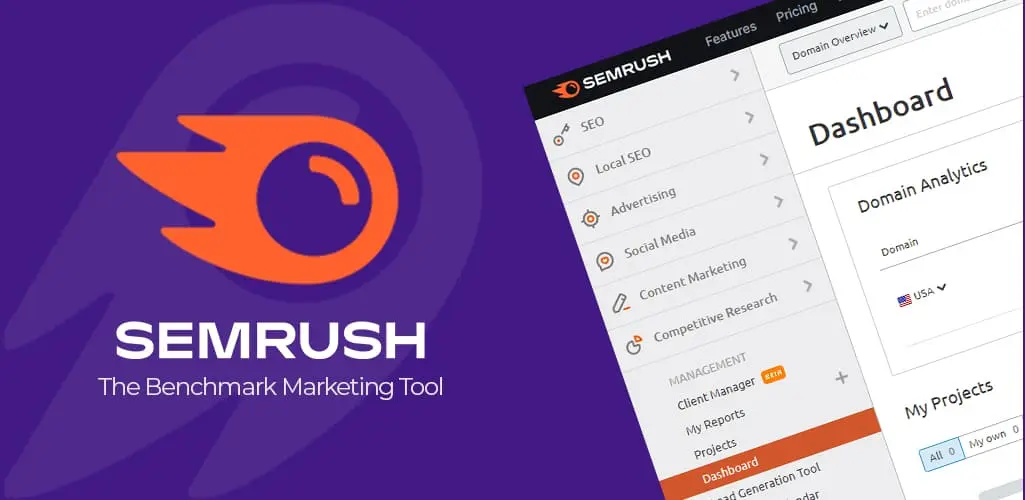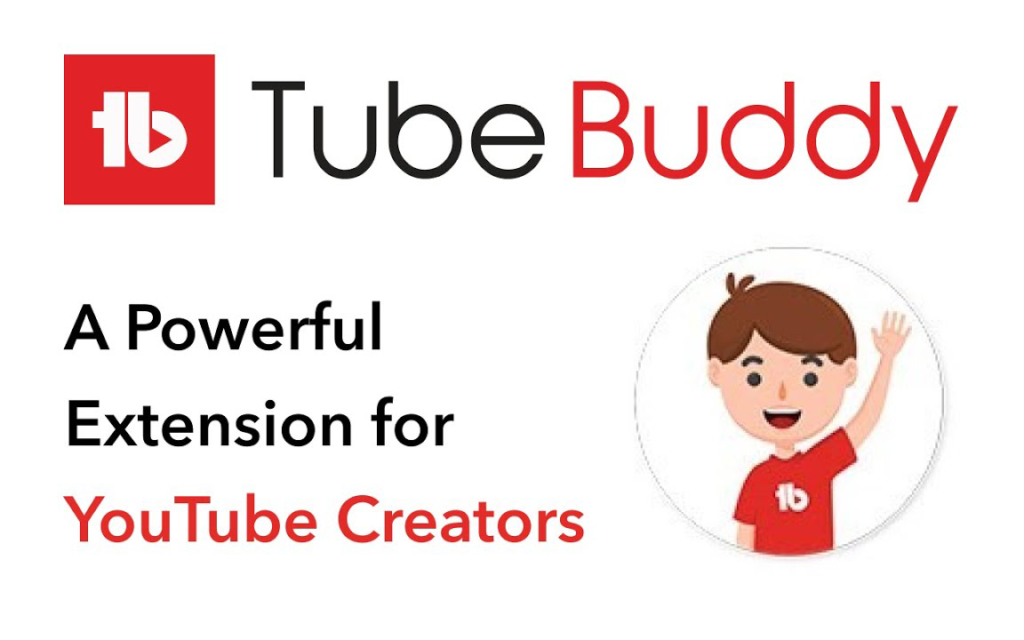40 Ways to Drive tons of Traffic to Your Website
More consumers are probably what a marketer or business owner would like most in the world, if you ask them. What frequently follows that? more visitors to their website. In fact, 61% of marketers claim that generating traffic and leads is their top difficulty.
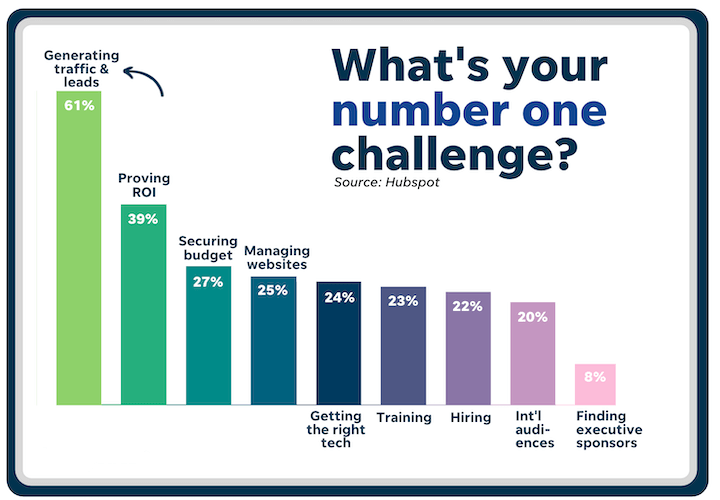
There are numerous techniques to increase traffic to your website, and in today’s post, I’m going to share a whopping 40 of them with you, practically all of which are free.
How to drive traffic to your website with content
A spoiler alert: content is necessary for increased website visitors. So feel free to skip this part if you intend to. I’ll watch to see whether you skip back up in ten seconds after realizing that you can’t utilize any of the other tactics without high-quality content.
Have a business blog
First and foremost, your business needs a blog where you can regularly publish useful, long-form content on your site. This is non-negotiable.
- Companies who blog get 97% more links to their websites.
- Businesses that blog get 55% more website visitors than businesses that don’t.
- Marketers with blogs are 13 times more likely to generate positive ROI.
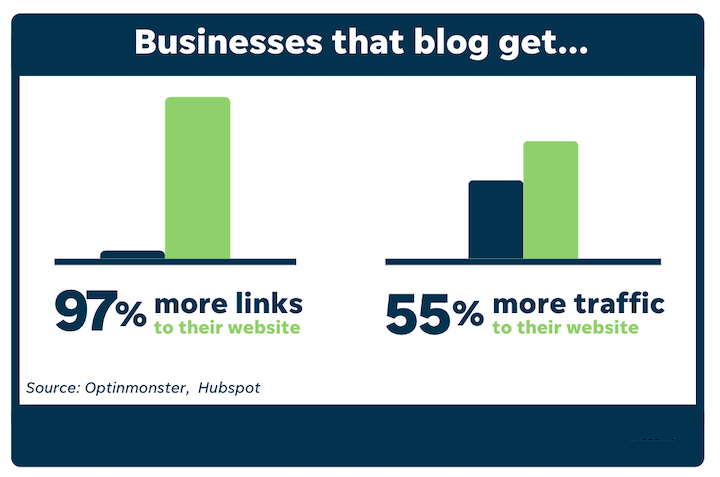
More reasons for visitors to visit your website will exist the more value you provide on it. And the majority of the remaining ideas in this essay will be challenging to implement without a blog (or any post on this topic, for that matter).
Focus on evergreen topics
While news and popular topics may temporarily increase your traffic, they are not worth the time and effort. Focus your material on subjects that your audience will always find interesting. Over time, these evergreen posts will attract traffic and links, especially if you update them frequently (more on that later).
Create catchy headlines
One of the most crucial aspects of your material is the headline. In fact, studies have shown that good blog headlines can increase traffic by 500%. Even the most in-depth blog post won’t get read if it doesn’t have a catchy headline. Learn the craft of writing headlines so that people would select your content on the SERP.

Invite others to guest blog on your site
Not only can you expand your topics and viewpoints with the help of guest authors, but they’ll also want to share the piece with their network and include a link to it on their website, which can attract more readers to your site. Just make sure you only publish original, high-quality content free of spammy links (lest you get a Google penalty and lose traffic). This may be accomplished and your content kept on brand with the help of a set of general guest posting standards.
Create awesome visuals
Use design applications like Canva to visualize data, recreate charts, and illustrate ideas. Your website will receive links from other websites that utilise your photographs. Additionally, Google is including more photos in its standard search results, which gives you more chances to rank and raise the attraction (and consequently click-through rate) of your result.

Incorporate video
Text-based material is fine, but video may draw in more viewers and keep them watching. Here are a few strategies for utilizing video to increase website traffic:
- Embed videos into your blog posts so they can appear in video search results
- Do YouTube SEO to rank higher on YouTube, then add links to your website in the video description.
- Add call to action buttons directly in your video that send people to your site.
Have a resource center
You should provide a variety of content to inform and engender trust with your audience in addition to blogs and videos. Don’t overlook seminars, templates, downloadable instructions, infographics, and other resources. Make a resources page where you may collect these lead magnets as you create them and use them elsewhere online. A collection of multimedia content will draw viewers who will frequent your website frequently.
How to employ SEO to get more traffic to your website
Therefore, all of the aforementioned strategies have one flaw. They won’t bring visitors to your website if they can’t be found. You also need an SEO strategy because 71% of Google search traffic hits go to the first page.
Search engine optimization, or SEO, is the process of making a website more search engine friendly so that it will appear higher in search results for pertinent queries. Here are the fundamentals of SEO; an SEO strategy is a completely different animal.
Target keywords
People use keywords to enter words and phrases into search engines, and as you might expect, some terms are searched more frequently than others. You may observe, for instance, that the term “how to boost website engagement” receives only about 10 searches per month, whereas the keyword “how to increase website traffic” receives 300 searches.
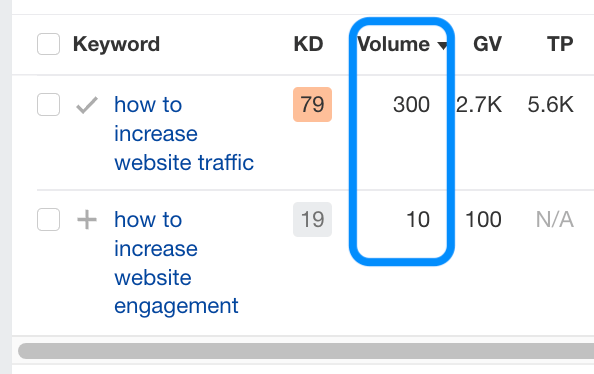
long-tail keywords
So the possibility for traffic increases with search volume, right? Wait a minute. Many extremely popular keywords are also extremely wide and difficult to rank for (for instance, “website” has a volume of 143,000 searches per month).
On the other side, long-tail keywords are simpler to rank for and will drive the most targeted traffic to your website.

Place your keywords strategically
The foundation of on-page SEO is the optimization of your content so that search engines can recognize its topic and rank it in pertinent queries. Make sure your target keyword appears in the following places:
- Title tag (meta title)
- H1 heading
- At least two H2 headings
- Naturally in the body
- The first 100 words
- Image file names and alt text
- Meta description

Optimize your SERP appearance
It is insufficient to simply use the term in your meta description and meta title. In order to increase their visibility on the SERP and promote more organic clicks, you must optimize these crucial pieces of information.
- Meta description: Keep this between 155-165 characters, indicate the value the reader will get out of the post, and make it actionable.
- Meta title: Make this 60 characters or less value, with the keyword close to the beginning, and indicate some sort of value or benefit.
Link internally
Make sure to include at least 1-3 links to other pages on your website when writing and publishing material. Additionally to increasing traffic to those pages, this will (a) keep users on your website longer, (b) encourage them to see more pages, and (c) enable them to gain more value from your website. All of these actions will raise your rating and increase traffic to your website.
Improve your page speed
Ever waited for a webpage to load for thirty seconds? neither do I. Your bounce rate will be quite high if your website takes a very long time to load. With the page experience improvement, speed is now much more important as a ranking criteria. Make that all aspects of your pages, including picture file sizes, page layout, and the operation of third-party plugins, are as technically optimized as feasible. The better, the quicker your website loads.
Your site’s performance will be rated by Google’s PageSpeed Insights tool, which will also make recommendations for enhancing your Core Web Vitals and other factors. Use it!
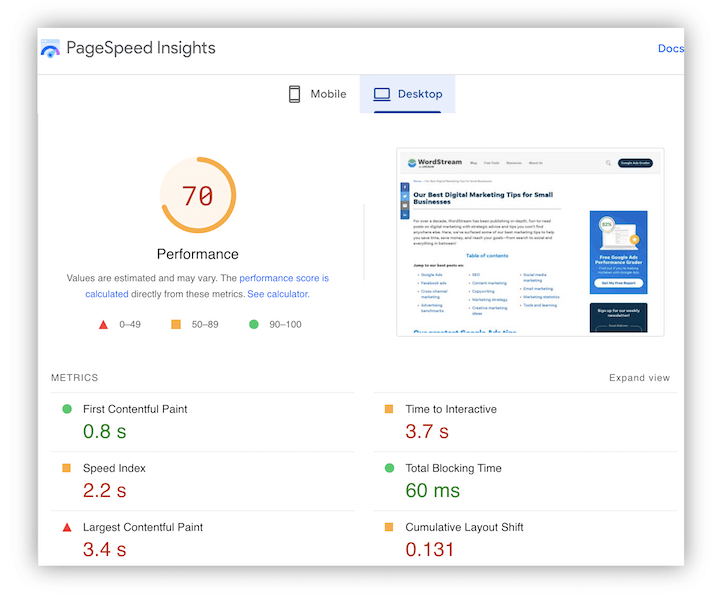
Make your site responsive
Today, mobile devices receive more traffic than desktop computers, so forcing users to pinch and scroll to navigate your website is essentially urging them to leave. Even if your website is simple, you still need to make sure that it can be viewed easily and conveniently on a variety of devices, including smaller smartphones.
Implement Schema markup
Using Schema markup (or another microdata format) will make it simpler for search engine bots to identify and index your pages, but it won’t always result in an increase in website traffic on its own. Better rich site snippets, which increase click-through rates, are a potential outcome of adopting schema for SEO.

Regularly refresh your content
Content freshness is a ranking criterion, and even the most evergreen content eventually loses its appeal. You’d be shocked at what a content refresh may accomplish, even if your piece is still appearing on the first page of Google. A recent publish date can greatly raise CTR and move you up the SERP, which can result in a spike in traffic.
However, you cannot simply edit a few words and then change the post’s publish date. Google is more intelligent than that. Following are some tactics from my article on how to increase traffic to evergreen content:
- Update and/or add new information and stats.
- Replace outdated visuals and/or create new ones to illustrate concepts.
- Add new links to more recent resources.
- Fix broken links and images.
- Add new keywords from the query report in Search Console (more on that later).
- Tweak your meta title and meta description.
Get backlinks
The number and caliber of links pointing to your website are among the most important ranking variables used by Google. Your own Domain Authority rises the more links you receive from reliable websites with a high Domain Authority. In addition to whatever traffic you receive from the link itself, your rank and traffic will both increase the greater your domain authority (DA) is.
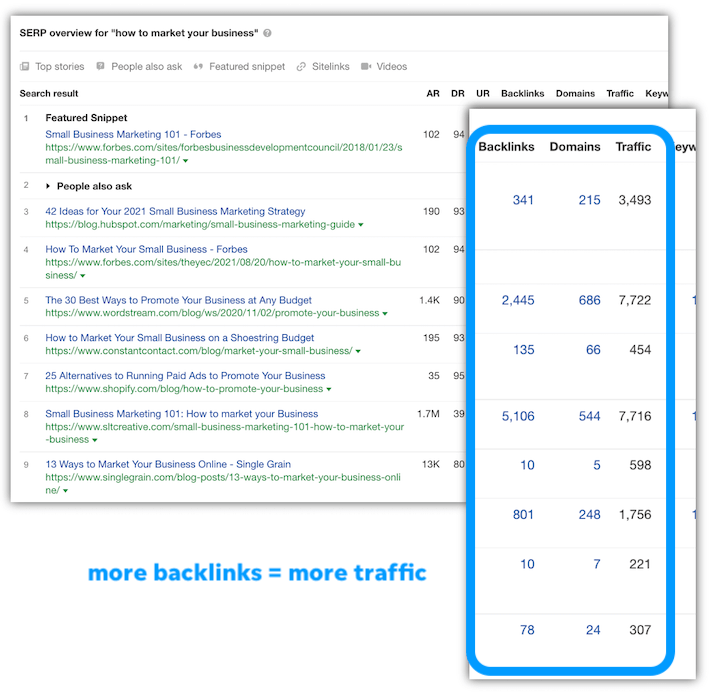
Here are just a few of the many effective link-building techniques:
- Reach out to credible sites and offer to write a guest post where you can link to your site in the body or your author bio.
- Use an SEO tool to find broken links on other websites and offer yours as a replacement.
- Create original, high-quality content that just begs to be linked to.
How to increase traffic to your website using social media
Referral traffic to your website is one of the advantages of social media marketing. Here are some strategies for using these sizable platforms to drive visitors to your website.
Promote your content on social
Making excellent material and hoping that people would find it is insufficient. Promote your content on the social media platforms that your audience uses most frequently. While Google Business posts can help your website appear in local search results, Twitter is best for quick, succinct, and alluring links. B2C goods companies may have excellent success on image-heavy social media platforms like Pinterest and Instagram.
Not only will this increase traffic to your website, but the more people that read your content, the more probable it is that you will receive the previously mentioned backlinks.
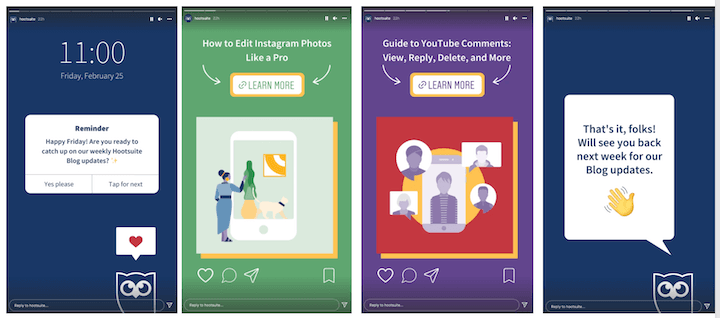
Add hashtags
Include pertinent hashtags when posting your content on LinkedIn, Twitter, Instagram, and other hashtag-friendly platforms to increase the visibility of your posts. To be found by those most likely to read, share, and/or link to your content, keep the hashtags tightly related to the subject of the post.
Target amplifiers
Creating material for potential amplifiers as opposed to just potential customers is a great point that he highlights in his essay. These amplifiers consist of:
- Industry publications like trade journals, news sites, big-brand blogs, and social influencers.
- External sources of influence like journalists in mainstream media and social influencers outside of your field.
- Customer evangelists: the people with industry followings who use and recommend you.
- Potential evangelists: customers with big networks and followings, or well-read publications
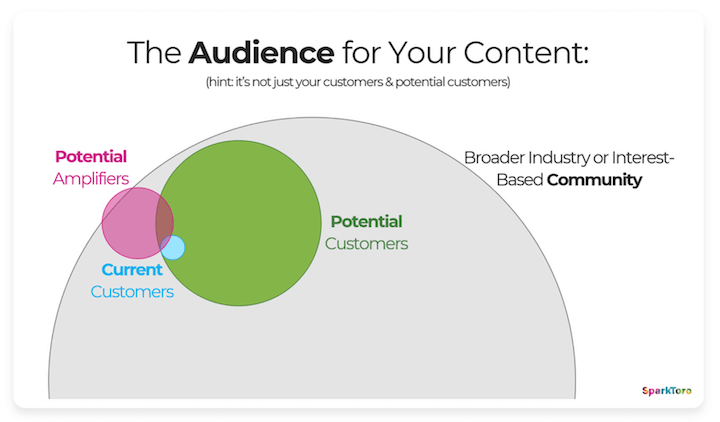
Post native LinkedIn articles
You should regularly submit material to LinkedIn because it is the largest professional social network and a valuable publishing platform in and of itself. By doing this, you can improve website traffic, attract more people to your LinkedIn Company Page, and enhance your standing in your field. Furthermore, there’s no need to start from scratch; simply reflect on a current issue or reuse previously published material.
Interview industry thought leaders
Think interviews are reserved for major league athletes? If you just ask, you’d be surprised at how many individuals will be open to speaking with you. Send out letters to thought leaders in your industry seeking interviews, and then post the interviews on your site. The interviewee would undoubtedly share the content as well, thus extending its reach. Name recognition will help raise your website’s traffic and reputation.
Add social share buttons
This is an easy website traffic win. Social share buttons allow readers to share the page they’re reading with their social networks in just a few clicks.

The click-to-Tweet tool is another choice; with it, you provide a prewritten Tweet that users can post with just one click. Whether any of these plugins are available for your website, check to see if you may try them out.
Research the competition
You are at a disadvantage if you haven’t used tools like BuzzSumo to research what your competitors are doing. These services combine the social performance of particular websites and content to provide you a quick overview of the subjects that are popular with readers and, more significantly, trending on social media. To increase traffic to your website, find out what people are reading (and talking about) and create content similar to it.
Post at the right time
If you want to be more specific, you can also look at your social media statistics to determine the hours of the day and days of the week when your audience is most active, and then share links to your blog posts at those times. Start by looking at the overall average best times, then explore the data to make adjustments.
How to get traffic to your website with listings
Although adding your website to your listing in business directories is a promising way to increase website traffic, it is not sufficient. Your listings must be optimized in order for them to rank on the relevant platforms and be viewed by local searchers.
The finest free business listing websites may be found here, but your Google Business Profile is the most crucial one because an optimized listing can help you rank on Google Maps and Google Search. Since Facebook is the second-largest directory, it is also significant. Also keep in mind well-known websites like Yelp, Angie’s List, and others. Enhance your listings by:
- Fill out every section available.
- Include your business category.
- Keep your information as consistent as possible across listings.
- Get reviews and respond to them.
- Add photos.
- Keep your information updated regularly
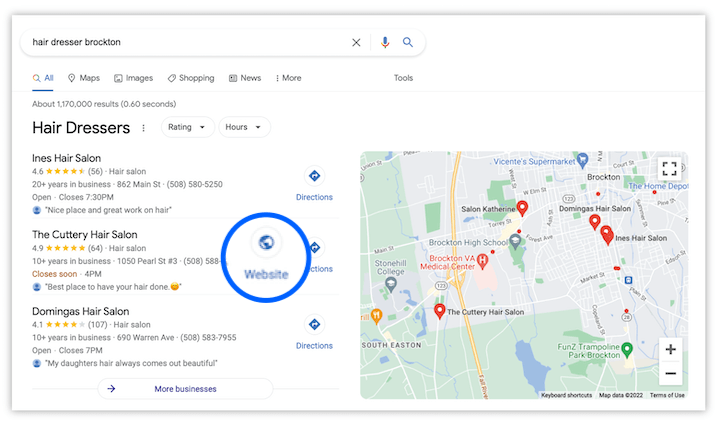
More ways to increase website traffic
Host webinars
People enjoy learning, and webinars are a fantastic method to share your knowledge with your interested audience. Webinars are a fantastic way to drive more visitors to your website when used in conjunction with a successful social media marketing campaign. A week or so beforehand, send out an email, then the day before the webinar, send out a reminder with the subject line “Last Chance to Register.” Make sure to save the presentation for subsequent viewing, and make sure to heavily publicize your webinars on social media. To learn more about conducting a webinar, follow the link.
Start an online community
Building a community on your website is a terrific approach to start a discussion and boost traffic since people want to express their opinions and weigh in on topics they are passionate about. Implement a strong commenting system using external tools like Facebook comments or Disqus, or set up a special forum for visitors to post questions. However, don’t forget to oversee your neighborhood to guarantee that minimal levels of decency are fulfilled.
Participate in forums
Join discussion forums and social media groups on Facebook, Reddit, and LinkedIn so you may impart your knowledge. Do not post solely links or include links in every post; only include links if it is permitted and appropriate to do so. Also, confirm that the link points to a specific blog article about a pertinent subject. Driving traffic to your website is not the main objective here. To increase value and increase brand recognition. Any interested parties will look for your website on their own or visit your profile, where they can locate it.
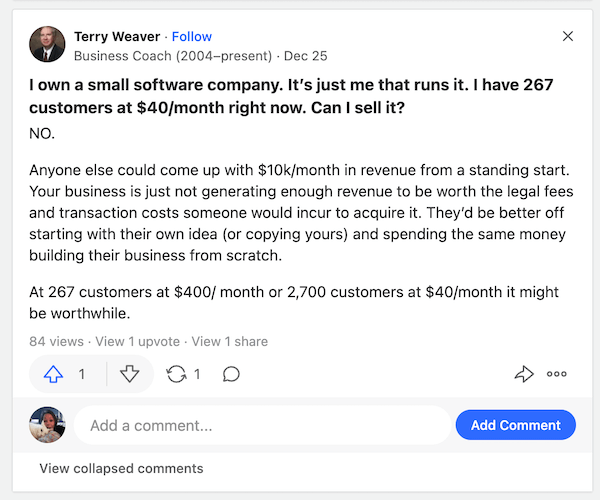
Attend conferences
There are probably at least one or two significant conventions and conferences that are pertinent to your business, regardless of the industry you work in. It is a wonderful idea to attend these gatherings, but it is even better to speak there. Even a mediocre speaking engagement can help you position yourself as a thought leader in your field and increase traffic to your website.
Submit your content to aggregator sites
If you have a blog, it probably has an RSS feed that aggregator websites can use to show the most recent posts on a certain subject. People frequently opt in to get emails with these links while using these services to follow their favorite blogs, news sites, and other websites. Although the majority of aggregators will locate your feed on their own, there are some paid aggregators to take into account.
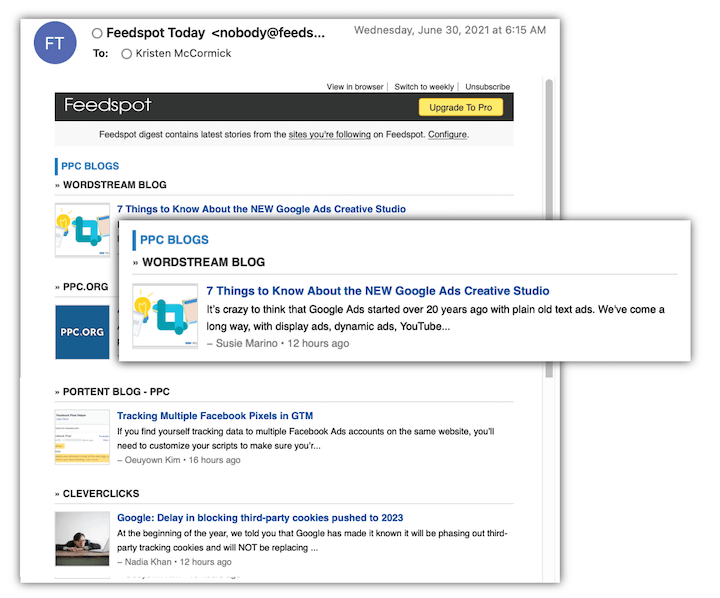
Start an email newsletter
It’s not necessary to make a newsletter difficult. A recent blog article from WordStream is highlighted in our weekly newsletter, the Performance Tip. It’s wonderful for pieces on subjects that your audience might not know to look for and it’s ideal for folks who use their inbox as a reading list. For instance, this article about emotive copywriting receives roughly 1,000 hits per month from organic search. However, it was really popular with our email list and in only a few days, it generated more than 4,000 sessions.

Just be careful not to bombard your readers with too many emails, or even too many links in one email.
Reach out to email newsletters
There are newsletters for every conceivable subject, and many of them welcome submissions and pitches. Find the people in your niche who are looking for quality material by doing some research, then offer it to them. Not only will your traffic increase if you are featured, but you may also attract more frequent visitors who frequent your website or subscribe to your email.
Create a free tool
What is superior to free and insightful content? Free and practical resources tools for brainstorming, testing, quizzing, and more. If the landing page is optimized with long-form content, your tool may rank naturally. Make it something that your visitors can use repeatedly, and you’ll see a huge increase in traffic.
Advertise
Yes, this one costs money, but if you play your cards right, it will more than likely pay for itself.
Although SEO is excellent, it takes a few months of constant writing to increase traffic, create links, and gain Google’s trust. You might want to think about starting a sponsored advertising campaign in the meanwhile. It’s possible to draw a large number of highly targeted visitors to your website using search, display, and social ads. Before pulling out your credit card, consider your goals carefully because every paid marketing outlet has advantages and disadvantages.
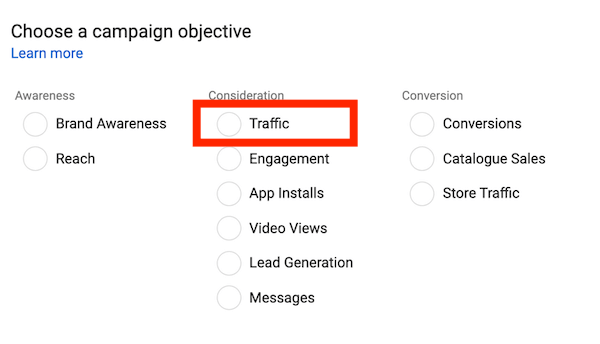
Google Ads are a good place to start; view our tutorial on how to use Google Ads. You must use high commercial intent keywords as part of your paid search tactics if you want more visitors to your website to also mean more sales. Yes, there can be a lot of competition (and expense) for these search terms, but there may also be rewards. In fact, Google even asserts that PPC truly returns more like $8 for every $1 invested.
Tools to help drive traffic to your website
Aside from the all-in-one SEO tools in this list, all of these are…you guessed it…free!
Track SEO metrics in Google Analytics
Google Analytics is a priceless resource for information on practically every aspect of your website, including the demographics of your visitors and the most popular pages. Pay close attention to your SEO metrics and use the data to guide your content and promotion activities. Discover the most popular subjects on your website, the demographics of your visitors, the channels they use, and more—then capitalize on and scale up what is effective.
View your queries in Google Search Console
Finding the search terms that are directing people to your site in search results and clicking on it may be done with the help of Google Search Console. This can help you uncover new keywords to target overall, new keywords to add to an existing page, and new keywords to make sure your pages are ranking for what you’re targeting. Additionally, GSC allows you to analyze organic click-through rates and troubleshoot indexing problems.
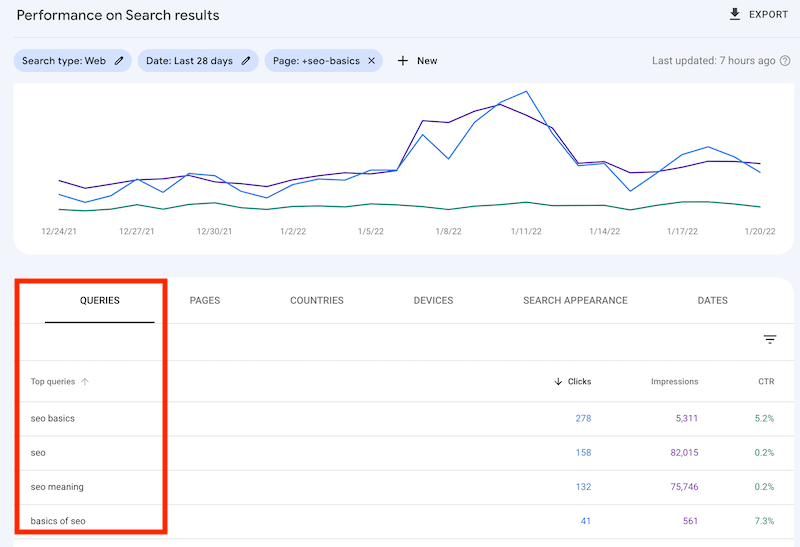
Analyze the SERP with SEO tools
You may conduct keyword research, obtain backlink analyses, examine the SERP, find content gaps and ranking chances, audit your website, and more with all-in-one SEO tools like Semrush and Ahrefs. They can even be used to evaluate the pages on the websites of your rivals.
Audit your site with website graders
These tools are a little more user-friendly than all-in-one SEO tools, but they’ll still audit your website to look for ways to increase traffic and ranking. The reports are simple to read and provide insights and practical advice for raising your score. Others take into account your website’s accessibility and content readability.
Sales Funnel
sales funnel, also called a purchase funnel, is the visual representation of the customer journey, depicting the sales process from awareness to action.
The funnel, which is also sometimes referred to as a marketing funnel or revenue funnel, illustrates the idea that every sale begins with a large number of potential customers and ends with a much smaller number of people who actually make a purchase.
Why is implementing a sales funnel important?
There are several reasons why implementing a sales funnel is important, including the following:
- Creates customers. The point of the sales funnel is to take a business’s target audience and move the members through a series of steps that may eventually result in them becoming customers.
- Generates referrals. In addition to acquiring a base target audience and group of customers, a sales funnel also spurs satisfied customers to refer other prospects that previously may not have fallen into the original target audience.
- Monitors and tracks. A sales funnel enables organizations to see how well each step of the sales process is working and to make adjustments as needed. This helps ensure efficient use of time and sales resources. Pushing customers through the sales funnel creates useful feedback.
- Focuses efforts. A sales funnel narrows the business’s focus to a specific group of prospects. This makes it easier to reach target audience members and convert them into customers when they reach the bottom of the funnel. A sales funnel can also help businesses weed out unqualified prospects by requiring potential customers to go through a series of steps eventually leading to a purchase.
Best Sales Funnel Software to use
- GetResponse – All-in-one machine
- Systeme.io – Free plan with all the features
- ClickFunnels – Unlimited contacts
- Kartra – Great for agencies
- ActiveCampaign – Excellent automation capabilities
- HubSpot – Contact management features
- Wishpond – Good looking templates
- Thrive Suite – Good value for money
- Keap – Plenty of options
- Leadpages – Collect unlimited leads
- Landingi – Great looking landing pages
- Instapage – Sophisticated A/B testing
How to drive traffic to your website:
recap
That’s a wrap! Here’s how to increase website traffic:
- Have a business blog
- Focus on evergreen topics
- Write irresistible headlines
- Invite others to guest blog on your site
- Create awesome visuals
- Incorporate video
- Have a resource center
- Target keywords…
- …long-tail keywords
- Place your keywords strategically
- Optimize your SERP appearance
- Link internally
- Improve your page speed
- Make your site responsive
- Implement Schema markup
- Get backlinks
- Regularly refresh old content
- Promote your content on social
- Add hashtags
- Target amplifiers
- Post native LinkedIn articles
- Interview industry thought leaders
- Add social share buttons
- Research the competition
- Post at the right time
- Host webinars
- Optimize your listings
- Start an online community
- Participate in forums
- Attend conferences
- Submit your content to aggregator sites
- Start an email newsletter
- Reach out to email newsletters
- Create a free tool
- Advertise
- Track SEO metrics with Google Analytics
- Identify queries with Google Search Console
- Analyze the SERP with SEO tools
- Audit your site with website graders
- Sales Funnel
